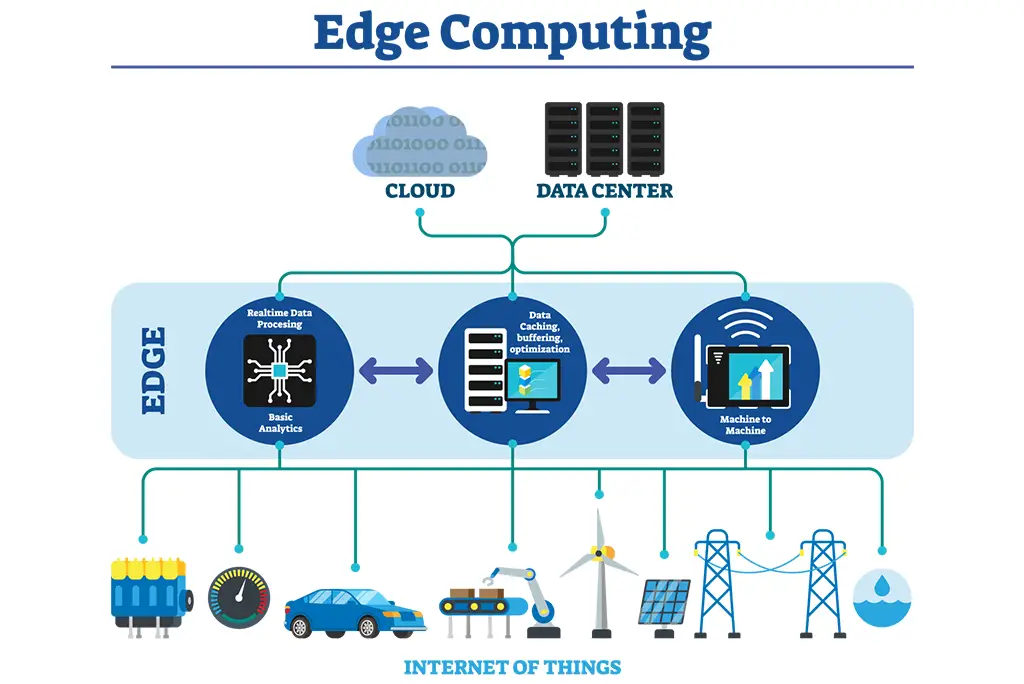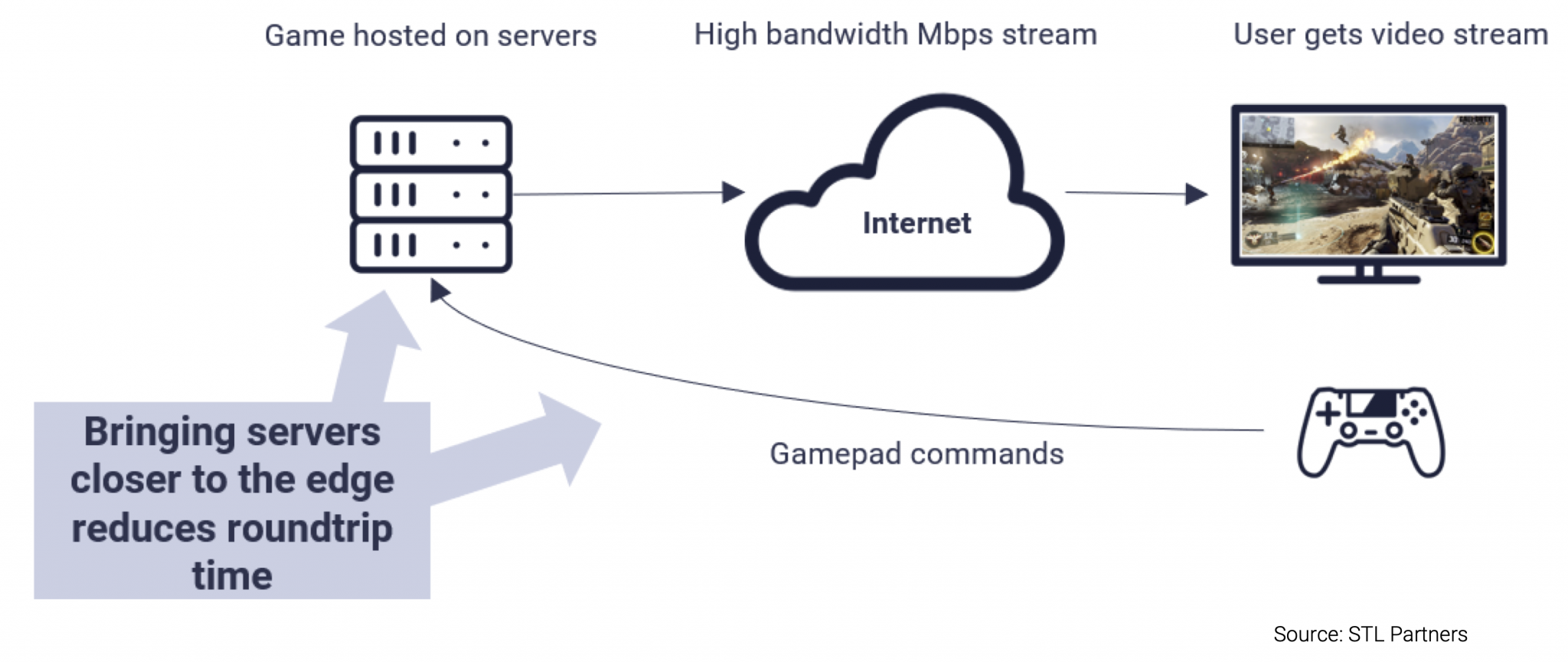Benefits of CDN Edge Computing:

- Reduced Latency: Edge servers are geographically dispersed, bringing content and computing resources closer to end users, reducing latency and improving user experience.
- Improved Scalability: Edge computing distributes workloads across multiple nodes, making it easier to scale applications and handle peak demand.
- Increased Security: Edge servers can act as a first line of defense against cyberattacks, mitigating threats before they reach central servers.
- Lower Costs: Edge computing reduces the need for expensive central data centers and network infrastructure, resulting in cost savings.
- Enhanced Customization: Edge servers can be tailored to specific applications and use cases, providing a more optimized and personalized experience.
Use Cases for CDN Edge Computing:

Media and Entertainment:

- Video streaming with reduced buffering and improved video quality
- Live event streaming with low latency and high throughput
Gaming:
- Multiplayer gaming with reduced lag and improved in-game performance
- Game downloads with faster speeds and reduced installation times
E-Commerce:
- Personalized and location-specific content delivery
- Reduced cart abandonment rates due to faster page loading times
Cloud Services:
- Distributed storage and computing for faster data access and processing
- Serverless functions execution closer to end users
Healthcare:
- Telemedicine with low-latency video and audio communication
- Remote patient monitoring with real-time data analysis
Automotive:
- Connected and autonomous vehicles with real-time data processing for safety and performance
- Over-the-air software updates with reduced downtime
Other Use Cases:
- IoT devices with reduced data transfer latency and improved connectivity
- Social media and messaging with faster content delivery
- Content delivery networks (CDNs) with enhanced performance and reliability## Exploring CDN Edge Computing: Benefits and Use Cases
Executive Summary
Content Delivery Networks (CDNs) enhance website performance and user experience by distributing content across a network of edge servers positioned closer to end-users. This groundbreaking technology offers a myriad of advantages, including reduced latency, improved website speed, increased reliability, and enhanced security. Numerous use cases underscore the versatility of CDN edge computing, spanning from streaming media to e-commerce platforms and enterprise applications.
Introduction
In the contemporary digital landscape, website performance and user experience are paramount to business success. CDN edge computing empowers businesses with the tools to optimize their online presence, ensuring seamless content delivery and fostering positive user engagement.
FAQs
Q: What is CDN edge computing?
A: CDN edge computing is a technology that leverages a distributed network of edge servers to cache and deliver content to end-users, minimizing latency and optimizing website performance.
Q: What are the key benefits of CDN edge computing?
A: CDN edge computing offers numerous benefits, including reduced latency, enhanced website speed, increased reliability, improved security, and optimized bandwidth usage.
Q: For what use cases is CDN edge computing suitable?
A: CDN edge computing finds application in a wide range of scenarios, including streaming media, e-commerce platforms, enterprise applications, software updates, and gaming.
CDN Edge Computing Features
Reduced Latency
- Edge servers: Strategically positioned edge servers reduce the physical distance between end-users and content, minimizing latency and delivering a faster user experience.
- Optimized routing: Intelligent routing algorithms direct traffic to the closest edge server, further reducing latency and improving website speed.
- Caching: Edge servers cache frequently requested content, enabling immediate delivery without the need for round-trip requests to the origin server.
Improved Website Speed
- Reduced page load times: Fast content delivery significantly reduces page load times, enhancing user experience and search engine rankings.
- Improved user engagement: Faster websites encourage longer user dwell time, increasing the likelihood of conversions and sales.
- SEO optimization: Website speed is a critical ranking factor in search engine algorithms, and CDN edge computing can significantly improve page speed scores.
Increased Reliability
- Redundant servers: Edge servers are deployed in multiple locations, ensuring that if one server fails, others can seamlessly take over, maintaining service continuity.
- Load balancing: Edge servers distribute traffic across the network, preventing overloading and ensuring consistent performance even during peak usage periods.
- Enhanced resilience: CDN edge computing provides a robust and resilient platform for content delivery, minimizing the risk of downtime and service disruptions.
Enhanced Security
- Protection against DDoS attacks: Distributed Denial of Service (DDoS) attacks can be mitigated by leveraging CDN edge servers to absorb and redirect malicious traffic.
- Improved data protection: Edge servers can implement encryption and access controls to safeguard sensitive data and prevent unauthorized access.
- Compliance with regulations: CDN edge computing can assist businesses in meeting industry-specific security and compliance requirements.
Optimized Bandwidth Usage
- Reduced bandwidth consumption: By caching content closer to end-users, CDN edge computing reduces the amount of bandwidth required for content delivery.
- Improved cost efficiency: Reduced bandwidth usage can lead to significant cost savings on bandwidth charges.
- Optimized network performance: Efficient bandwidth utilization improves overall network performance, enhancing the user experience for all applications.
Conclusion
CDN edge computing is a game-changer for businesses seeking to optimize their online presence and deliver a seamless user experience. With its ability to reduce latency, improve website speed, increase reliability, enhance security, and optimize bandwidth usage, CDN edge computing empowers businesses to thrive in the competitive digital landscape. By leveraging this cutting-edge technology, businesses can gain a decisive advantage, leaving their competitors trailing behind.
Keyword Tags
- CDN edge computing
- Content delivery networks
- Edge servers
- Website performance
- User experience
